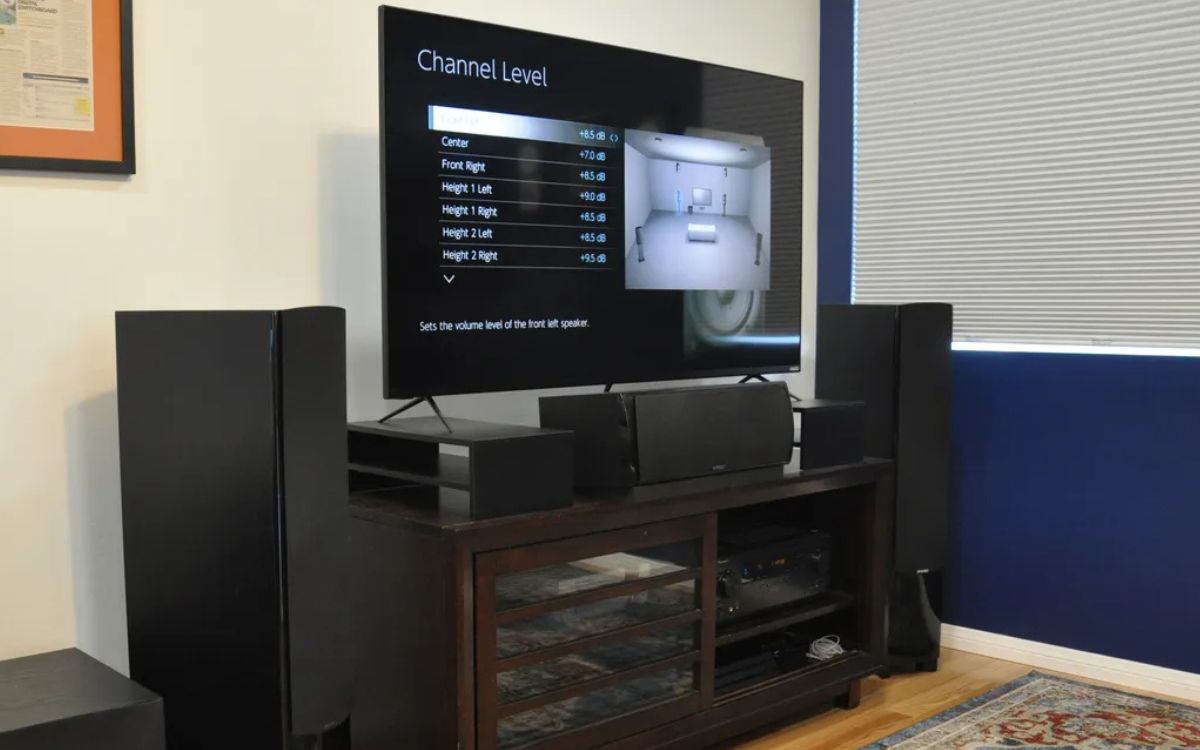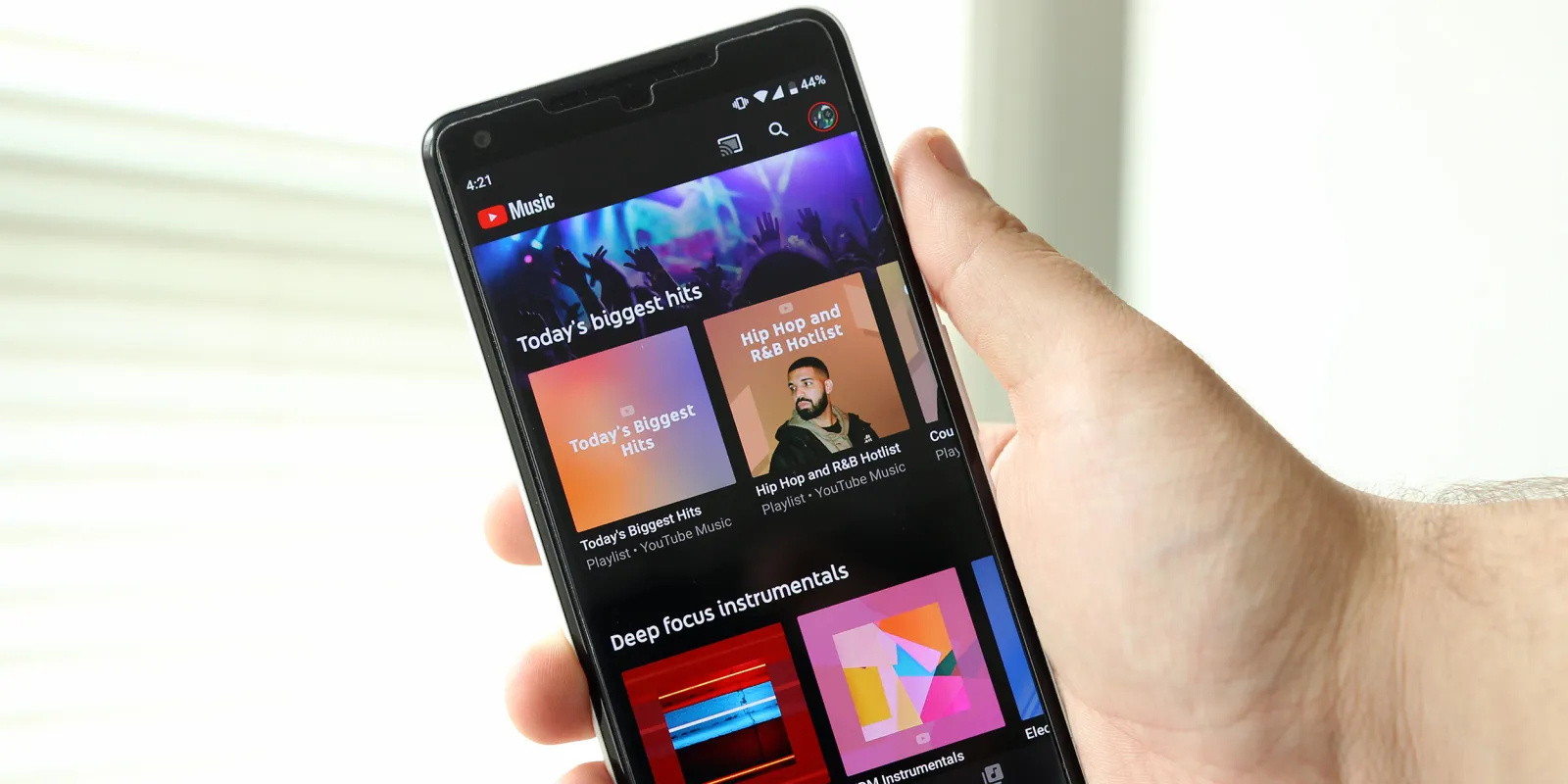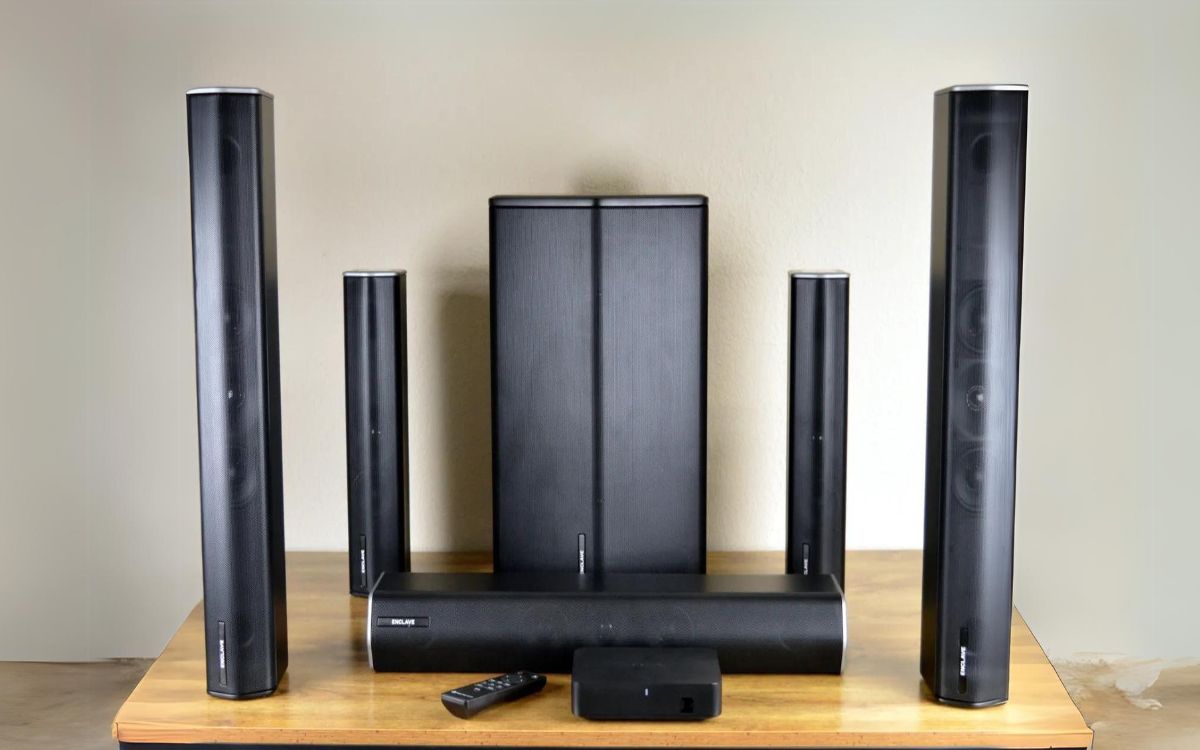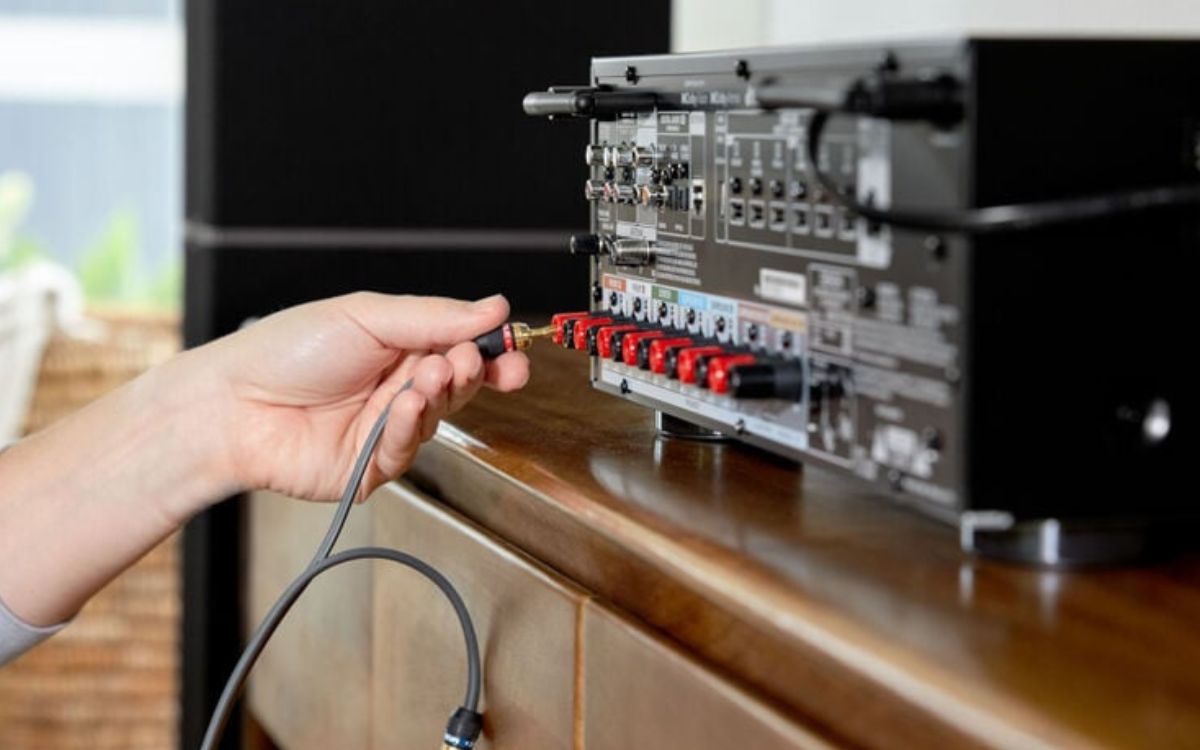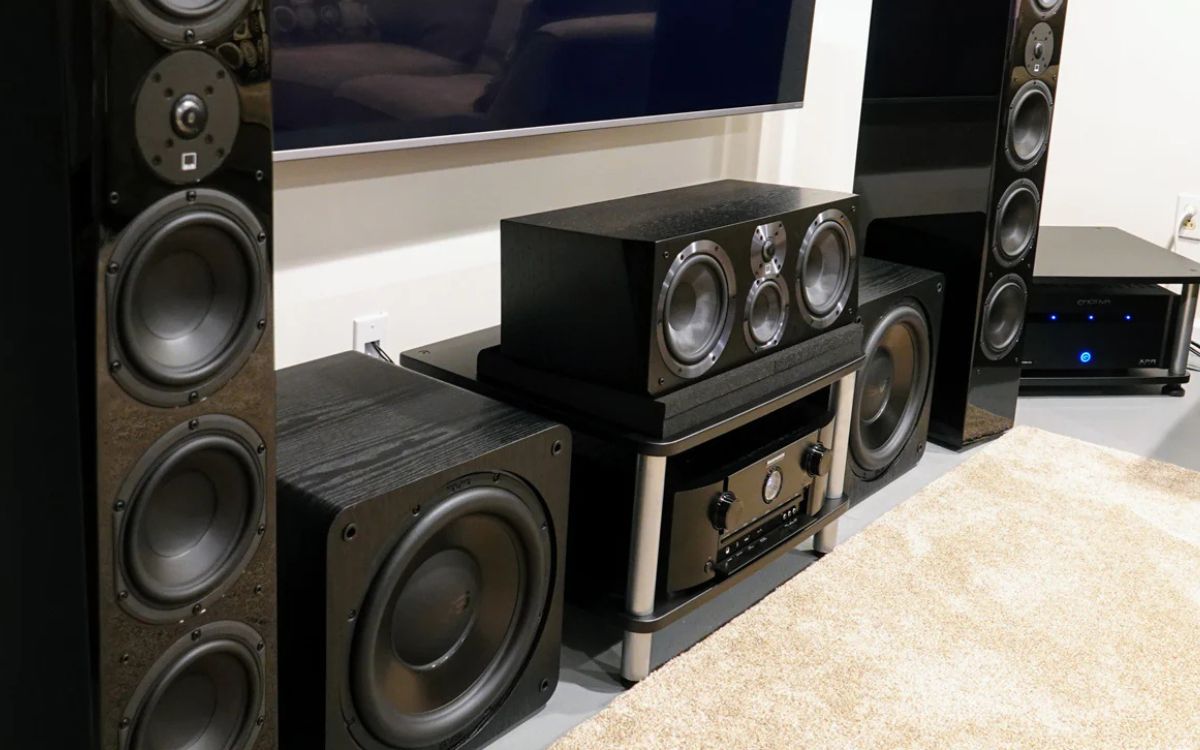Home>Production & Technology>Surround Sound>How To Stream While Using Surround Sound


Surround Sound
How To Stream While Using Surround Sound
Modified: January 22, 2024
Learn how to stream audio and video content while enjoying the immersive experience of surround sound. Find out how to optimize your settings for the best streaming with surround sound effects.
(Many of the links in this article redirect to a specific reviewed product. Your purchase of these products through affiliate links helps to generate commission for AudioLover.com, at no extra cost. Learn more)
Table of Contents
Introduction
Streaming has become a ubiquitous part of our lives, allowing us to enjoy a vast array of entertainment options conveniently from the comfort of our own homes. Whether you’re binge-watching your favorite TV shows or immersing yourself in the latest blockbuster movie, the quality of the audio plays a crucial role in enhancing your overall viewing experience. This is where surround sound comes into play.
Surround sound has revolutionized the way we consume media, providing a more immersive and realistic audio experience. By using multiple audio channels and speakers strategically placed around the room, surround sound creates a three-dimensional soundscape that envelops the listener, making them feel like they are part of the action. This technology has made its mark in the film and gaming industries, but does it translate seamlessly to streaming platforms?
In this article, we will explore the world of surround sound and how it can be incorporated into your streaming experience. We will delve into the streaming platforms that support surround sound, the necessary setup process, the devices compatible with streaming surround sound, and how to troubleshoot any issues that may arise along the way. So, get ready to take your streaming to the next level with the immersive power of surround sound.
Understanding Surround Sound
Before we dive into the intricacies of streaming with surround sound, it’s essential to have a basic understanding of what surround sound entails. In simple terms, surround sound refers to a audio system that creates a multi-dimensional sound field by using multiple speakers placed strategically around the listener.
The most common setup for surround sound is known as a 5.1 system, which consists of five main speakers and one subwoofer. The main speakers are positioned around the room, typically in front and to the sides of the listener, while the subwoofer enhances the low-frequency (bass) sounds. This configuration allows for a more immersive sound experience, with audio coming from different directions, mimicking real-life situations.
The five main speakers in a 5.1 surround sound setup are categorized as follows:
- Front Left and Right speakers: These two speakers provide the primary audio output and are responsible for delivering most of the dialogue, music, and sound effects.
- Center speaker: Positioned directly in front of the listener, the center speaker is responsible for producing dialogue and other central sounds, creating a clearer and more focused audio experience.
- Rear Left and Right speakers (also known as Surround speakers): These two speakers are placed behind the listener and are responsible for delivering ambient sounds, background noise, and special effects, providing a sense of depth and realism to the audio.
Surround sound systems also come in other configurations, such as 7.1 or even 9.1, which include additional speakers for an even more immersive audio experience.
It is worth noting that for streaming with surround sound, your audio source needs to support it, and your streaming platform must be able to deliver surround sound content. Without these two factors, the audio may not be properly encoded or transmitted to your speakers, resulting in a subpar listening experience.
Now that we have a better understanding of what surround sound is, let’s explore the streaming platforms that support this technology.
Streaming Platforms that Support Surround Sound
When it comes to streaming platforms, not all of them are created equal in terms of audio quality and support for surround sound. While most platforms offer stereo or standard audio, only a select few provide the option to stream content in surround sound. Here are some of the popular streaming platforms that support surround sound:
- Netflix: As one of the leading streaming services, Netflix offers a growing library of content that can be streamed in surround sound. Many of their original series and movies are specifically encoded and available in 5.1 surround sound, providing an immersive viewing experience.
- Amazon Prime Video: Amazon Prime Video is another platform that supports surround sound. Similar to Netflix, they have a wide range of movies and series available in 5.1 surround sound. You can enjoy stunning visuals and immersive audio with compatible devices and audio setups.
- Disney+: If you’re a fan of Disney, Pixar, Marvel, or Star Wars, Disney+ is the streaming platform for you. They offer a variety of content available in surround sound, including their popular original shows like The Mandalorian and WandaVision.
- Hulu: While not all content on Hulu is available in surround sound, they do offer a selection of movies and shows that support this audio format. Make sure to look for the surround sound symbol or refer to the audio specifications to ensure you are streaming in surround sound.
- Vudu: Vudu is a platform known for its high-quality video and audio offerings. They have a dedicated section for movies available in 5.1 surround sound, allowing you to enjoy cinematic audio right in your living room.
It is important to note that not all titles on these platforms support surround sound. The availability of surround sound depends on various factors, including the content’s source, encoding, and licensing agreements. Furthermore, your streaming device and audio setup must be compatible with surround sound to fully experience the immersive audio quality.
Next, let’s explore how to set up your surround sound system for streaming.
Setting up Surround Sound for Streaming
Setting up your surround sound system for streaming requires a few essential steps to ensure optimal audio quality. Let’s walk through the process:
- Choose the right speakers: Selecting high-quality speakers is crucial for achieving a great surround sound experience. Consider investing in speakers that match the specifications and requirements of your surround sound system.
- Position your speakers: Proper speaker placement is key to getting the most out of your surround sound setup. Follow the manufacturer’s guidelines for optimal placement, ensuring that the speakers are positioned correctly in relation to your listening area.
- Connect your audio sources: Connect your streaming device, such as a Smart TV or media player, to your surround sound receiver using an HDMI or optical audio cable. This allows the audio signal to be transmitted from the streaming device to the receiver for processing and distribution to the speakers.
- Configure your receiver: Access the settings on your surround sound receiver and configure it to match your specific audio setup. This includes selecting the appropriate audio input, calibrating speaker distances and levels, and enabling the surround sound processing mode.
- Check streaming platform settings: Ensure that the audio settings on your chosen streaming platform are configured to support surround sound. In some cases, you may need to change the audio output format or enable surround sound specifically within the platform’s settings.
- Select surround sound content: Look for titles on your streaming platform that are available in surround sound. These titles are typically marked with symbols such as “5.1” or “Dolby Digital” to indicate the audio format.
- Enjoy the immersive experience: Sit back, relax, and enjoy your favorite movies, shows, or games with the immersive surround sound experience. The sound will be dynamically distributed across the speakers, creating a realistic and captivating audio environment.
It’s important to note that the setup process may vary depending on your specific surround sound system and streaming device. Consult the user manuals or online resources for your devices for detailed instructions tailored to your setup.
Now that your surround sound system is set up for streaming, let’s explore the devices that are compatible with streaming surround sound.
Compatible Devices for Streaming with Surround Sound
To fully enjoy the immersive experience of streaming with surround sound, it’s essential to have compatible devices that support this audio format. Here are some of the devices commonly used for streaming with surround sound:
- Smart TVs: Many modern Smart TVs come equipped with built-in surround sound decoding capabilities. These TVs can directly decode and output surround sound to your connected speakers, eliminating the need for an external receiver. Check the specifications of your Smart TV to ensure it supports surround sound.
- Streaming Media Players: Popular streaming media players, such as Roku, Apple TV, and Amazon Fire TV, often support surround sound formats. These devices connect to your TV, allowing you to stream content from various platforms while delivering immersive audio to your surround sound system.
- Gaming Consoles: Gaming consoles, such as PlayStation and Xbox, are not only designed for gaming but also serve as media centers. They typically support surround sound and can be connected to your surround sound system to enjoy immersive audio while streaming movies, TV shows, and music.
- Audio Receivers: Dedicated audio receivers are essential components of a surround sound system. These devices decode and distribute audio signals to your speakers. Ensure that your receiver supports the necessary surround sound formats, such as Dolby Digital or DTS, to fully leverage the capabilities of your system.
- Soundbars: While soundbars are generally known for providing a slim and convenient audio solution, some advanced models come with built-in surround sound technology. These soundbars use virtual sound processing to create an expanded sound field, simulating the effect of multiple speakers. They can be a great option for those who want to simplify their setup without compromising on audio quality.
When selecting compatible devices for streaming with surround sound, ensure that they have the necessary connections, such as HDMI ARC, optical audio, or Bluetooth, to seamlessly integrate with your surround sound system. Additionally, verify that the devices support the specific surround sound formats your system is capable of decoding.
As technology continues to advance, more devices are becoming compatible with surround sound. Be sure to check the specifications and capabilities of your chosen devices to ensure a seamless and immersive streaming experience.
Now, let’s move on to troubleshooting any surround sound streaming issues you may encounter.
Troubleshooting Surround Sound Streaming Issues
While surround sound can elevate your streaming experience, it’s not uncommon to encounter issues along the way. Here are some common troubleshooting steps to resolve surround sound streaming issues:
- Check audio settings: Ensure that the audio settings on your streaming device and the streaming platform are configured to output surround sound. Verify that the correct audio format, such as Dolby Digital or DTS, is selected.
- Confirm device compatibility: Double-check that your streaming device and surround sound system are compatible and supporting the same surround sound formats. Incompatible devices can lead to distorted or no audio output.
- Inspect cable connections: Make certain that all cable connections between your streaming device, audio receiver, and speakers are secure and properly plugged in. Loose or faulty connections can cause audio dropouts or inconsistent sound quality.
- Update firmware and drivers: Keep your streaming device, audio receiver, and speakers up to date with the latest firmware or driver updates. Outdated software can lead to compatibility issues or audio playback problems.
- Adjust speaker settings: Check the settings on your audio receiver and ensure that the speaker channels and levels are correctly calibrated. Imbalanced or misconfigured speaker settings can result in uneven sound distribution.
- Consider audio format limitations: Some streaming platforms may have limitations on the audio format available for certain titles or devices. Verify if the content you are trying to stream is encoded in surround sound and supported by the platform.
- Restart and reset devices: If you’re experiencing persistent issues, try restarting your streaming device, audio receiver, and speakers. In some cases, a simple reboot can resolve temporary glitches.
- Consult user manuals or support: If troubleshooting steps don’t resolve the issue, consult the user manuals of your devices or reach out to customer support for further assistance. They can provide specialized guidance for your specific setup.
By following these troubleshooting steps, you can potentially resolve most surround sound streaming issues. However, keep in mind that every setup is unique, and additional steps may be required based on your specific devices and configurations.
Remember, troubleshooting can be a process of trial and error, so patience and persistence are key. With some troubleshooting, you’ll be able to enjoy your favorite streaming content with immersive surround sound.
Now that you’re armed with troubleshooting tips, let’s wrap up this article.
Conclusion
Streaming with surround sound adds a whole new dimension to your entertainment experience. By immersing yourself in a multi-dimensional audio environment, you can truly feel like you’re part of the action, whether you’re watching a movie, binging a TV series, or playing a video game.
In this article, we explored the world of surround sound and its compatibility with streaming platforms. We discussed the importance of understanding surround sound, the streaming platforms that support it such as Netflix, Amazon Prime Video, and Disney+, and the necessary steps to set up your surround sound system for streaming.
We also explored some of the compatible devices for streaming with surround sound, including Smart TVs, streaming media players, gaming consoles, audio receivers, and soundbars. It’s crucial to choose devices that not only support surround sound but also offer the necessary connections for seamless integration with your audio setup.
If you encounter any issues while streaming with surround sound, we provided troubleshooting tips to help you identify and resolve common problems. From checking audio settings to ensuring cable connections are secure, these troubleshooting steps should assist you in optimizing your surround sound streaming experience.
With the right setup and troubleshooting approach, you can fully immerse yourself in the audio richness that surround sound provides. So go ahead, grab your popcorn, sit back, and enjoy the captivating and immersive audio experience that streaming with surround sound brings to your home entertainment setup!


